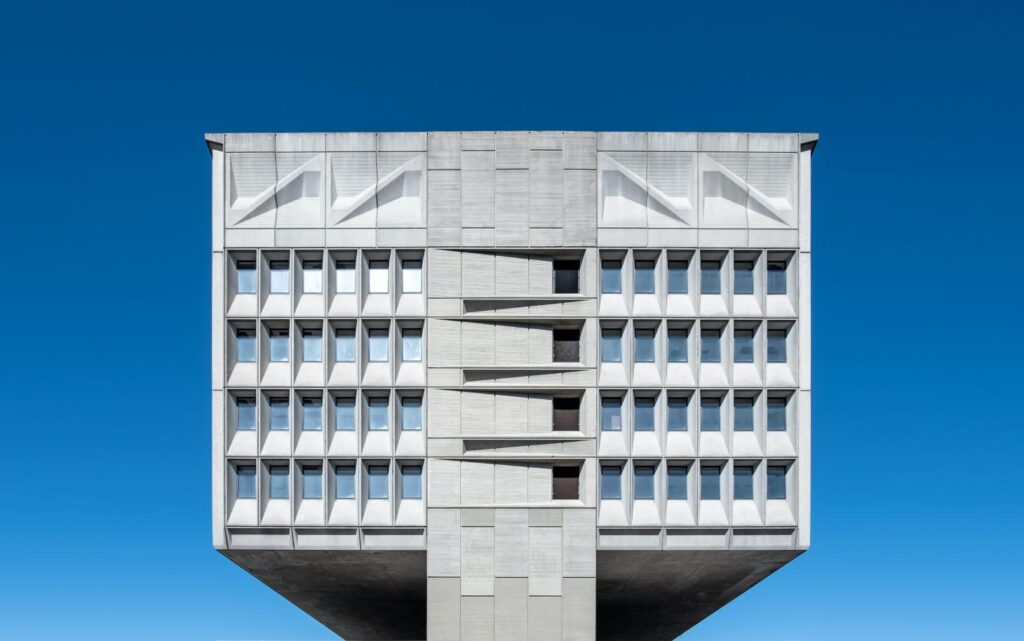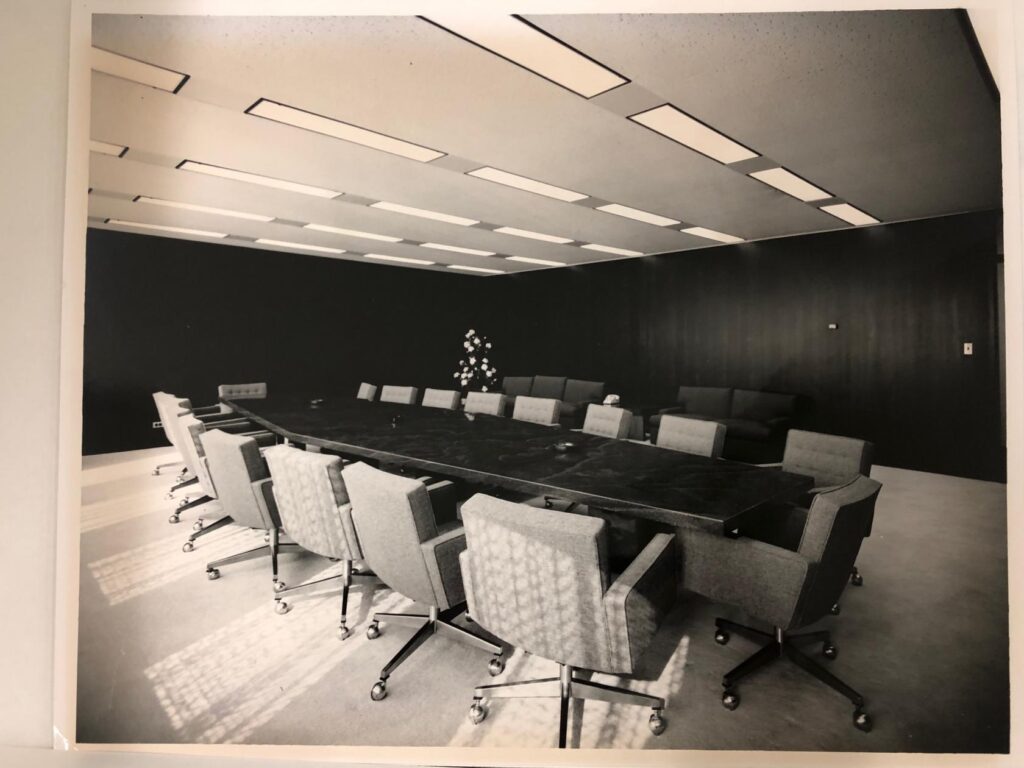
Another architectural icon was opened as a hotel this week. The nine-story Brutalist building in New Haven, Connecticut was designed by Marcel Breuer in 1967 for the Armstrong Rubber Company. Named Hotel Marcel, this building marked another height in the career of the Hungarian-born modernist who had completed the Whitney Museum of American Art in New York City the previous year, creating a modernist statement on Madison Avenue. It was perceived at that time as daring, strong, innovative, and American—an expression of the Museum’s identity.
By this time, Breuer completed his transformation from Modernism to Brutalism, and became well- known for building in heavy concrete slabs. It is those buildings which made him a leading figure of the mid-20th-century Brutalist movement and was a triumph for him in his career in the U.S.
This concrete tower, which consisted of both administrative offices and workshops for research and development, was the pride of Armstrong Rubber Company. A manufacturer of automobile tires, this mega company was founded by George F. Armstrong in 1912, but unlike its competitors such as Goodyear and Firestone, the brilliant businessman focused his attention on the replacement tire market. For decades, he benefited from America’s growing fascination with the automobile and the construction of new highways during the postwar years. It was when the company’s net sales reached $200 million and when its fiberglass-belted, bias-ply tire became the most widely used tires in the country, that the company built its new headquarter in New Haven.
It was a landmark complex designed by one of America’s most successful architects. Breuer, who was a graduate and former teacher at the Bauhaus, has come to capture the imagination of American companies, institutions, and private patrons seeking to have avant-garde buildings to express their progressive taste and image. The new boutique hotel, which will attract families and guests of Yale University, was developed by architect-developer Bruce Becker of Becker & Becker, who is known for revitalizing historic buildings and places and for his sustainable designs and solutions. It is the first net-zero hotel in the country, generating on-site at least as much energy as it consumes. The interiors were created by Brooklyn-based Dutch East Design, which specializes in hospitality. The materials—travertine, terra-cotta tile, and oak—were meant to bring warmth into the hotel’s public spaces. It is so gratifying to see the great care taken in renovating these masterpieces of architecture, and the way they are brought into 21st-century use.




